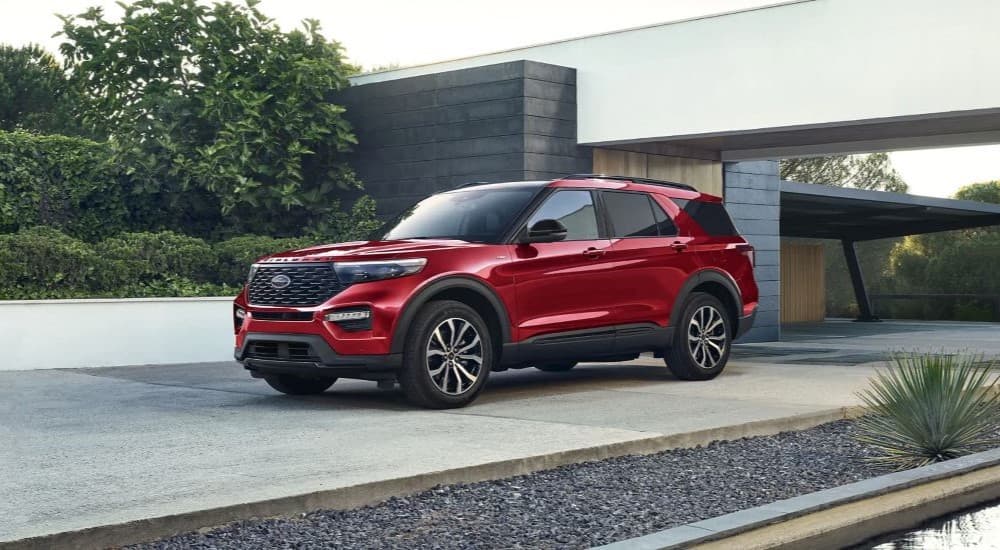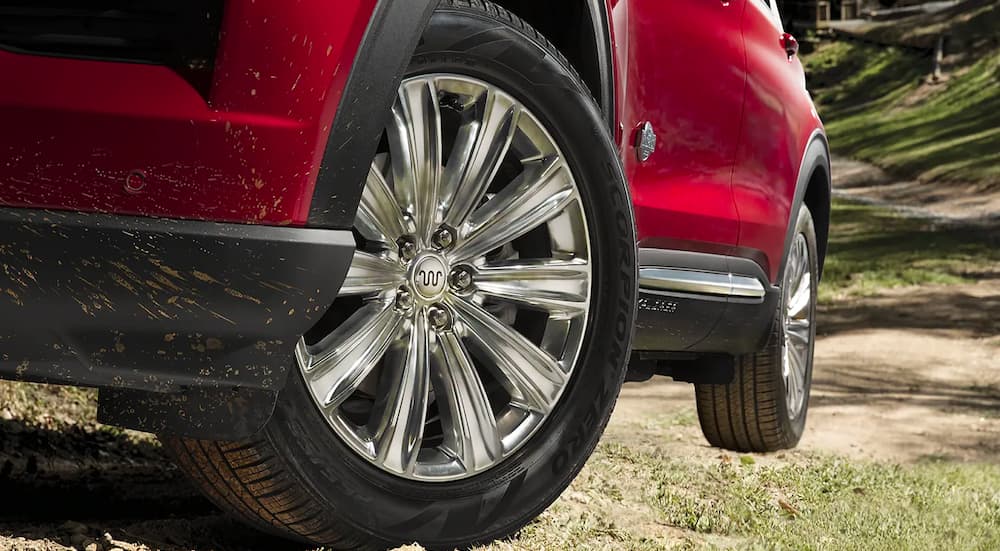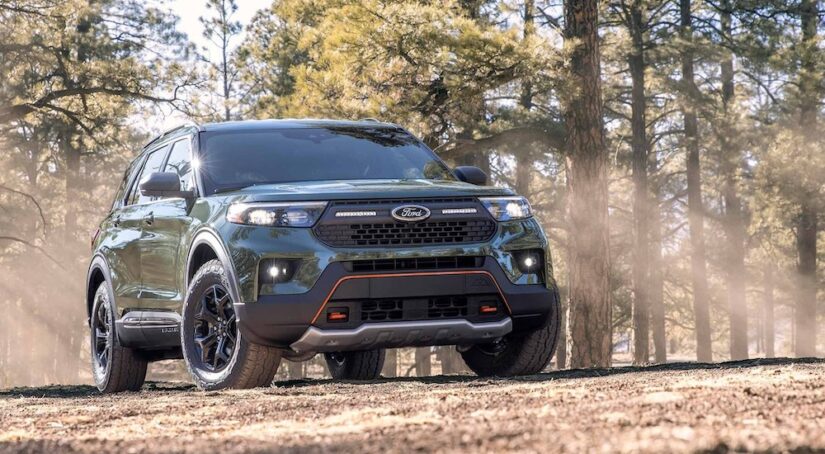There are several different ways in which you can determine whether something like an SUV is “successful.” Typically, when it comes to retail items, the number of sales determines an object’s overall success. Then again, we could consider overall customer satisfaction and whether those who purchased the item are pleased with or regret their purchases. Yet another angle would be considering longevity as a measure of success—whether consumers continue to purchase and enjoy their purchases over a period of time. Every Ford dealer should know that the answer to any of these questions is the same vehicle. Over the past six generations, the Ford Explorer has topped the chart in sales and satisfaction.
It stands to reason. With models that range from modest yet well-equipped to the off-road-ready Timberline, the Ford Explorer is a vehicle that fits many different life and drive styles. In a world in which three-row SUVs aren’t terribly difficult to come by, the Explorer manages to find and fascinate drivers across the country. Whether you’re heading east to explore the roads less traveled in Hocking Hills or doing nothing wilder than trying to get on 71N from 23S, the Ford Explorer is able to do just about anything you ask of it.
As a result, more and more drivers are turning to the Ford Explorer. As of April 1, 2023, Explorer was ranked as the best-selling three-row midsize SUV in the United States, and that was certainly not the first time it had won this distinction. Take a look at the recipe Ford has used to create its most successful SUV:
All Recipes Start with a Good Concept
The Ford Explorer dates back to 1991. Designed to replace the Bronco II, it was an instant success. While many newer additions to any manufacturer’s lineup tend to slowly endear themselves to the public, the first-generation Explorer outsold incumbent favorites like the Chevy S-10 Blazer and Jeep Grand Cherokee. Within three years, it had climbed the ranks to become the ninth best-selling vehicle in America.
That being said, the Explorer has changed quite a bit over the years, as have the needs of the average American driver. The earliest Explorers were offered as both two-door and four-door SUVs. Later, the two-door formula would become standard for the Explorer Sport, which was a more compact version of the four-door SUV. Ultimately, Ford and drivers alike agreed that putting two doors on an SUV made it harder to access the necessary rear seats, and discontinued the “coupe” version in 2003.
Speaking of rear seats, the third row of seating showed up as an option in the third generation, from 2002 to 2005. During the brand’s bumper-to-bumper reimagination in 2011, the third row became a permanent fixture across the lineup.
For those who are asking themselves if they really need a third row of seats, also consider that in today’s Explorer, the 18.2 cu.ft. of cargo space behind the third row becomes 47.9 cu.ft. with the last row of seating folded or 87.8 cu.ft. with all but the first row stowed. Sometimes, it’s the space that makes all the difference. In addition, the importance of a third row of seating to large families or carpoolers can’t be ignored.

Behind the Wheel of Ford’s Most Successful SUV
Naturally, the number of doors and seats aren’t the only big changes the Explorer has experienced in over three decades of production. Early Explorers were powered by a 4.0L V6 engine that produced a maximum of 160 hp and, as a best-case scenario, would provide up to 18 MPG of fuel chugged.
Fast-forward to the 2023 Ford Explorer. Building on the sixth generation released in 2020, this generation of Explorer relies upon a choice of power sources, from the 2.3L turbocharged four-cylinder in the Base, XLT, ST-Line, Timberline, and Limited trims to the 3.0L twin-turbocharged V6 that propels the ST, King Ranch, and Platinum trims. The former is good for 300 hp, while the latter takes that up to 400 hp. Even the two available hybrid Explorers more than double the hp of their 1991 ancestors, with 318 hp coming from its 3.3L/electric motor combination.
For many years, rear-wheel drive was standard on the Explorer, and all-wheel drive was optional. Then, there was a period where all-wheel drive was standard. The Explorer finally joined the lineup of front-wheel drive SUVs until the sixth generation, when rear-wheel drive became the standard again. Intelligent all-wheel drive with seven selectable drive modes is optional on all but the Timberline trim, which includes standard all-wheel drive.
For the Explorer within Us All
Not only has the Explorer’s equipment improved over time, but the ever-growing number of options available has helped seal the Explorer’s spot as Ford’s most successful SUV. The first indication that this is a vehicle intended for a wide range of drivers is its sheer number of trims—eight of them: the Explorer base trim, the XLT, the ST-Line, the Timberline, the Limited, the ST, the King Ranch, and the Platinum edition.
Furthermore, each of the Explorer’s trim options has its own features and personality. From the rear-wheel drive performance-oriented ST and its look-alike with regular power, the ST-Line, the off-road-ready Timberline trim, or the posh and luxurious Platinum trim, there truly is a vehicle in the Explorer’s lineup for every driver.
With that in mind, Ford still delivers a robust package of thoughtful standard features on its XLT trim. Ranging from the argument-stopping, such as tri-zone electronic automatic temperature control, to the downright helpful, like lighting in all three rows, the Explorer is simply a well-designed vehicle in every possible iteration.
Today’s Explorer also includes all the technology we’ve come to appreciate, from the Ford Co-Pilot360 suite of safety and driver-assist technology—including a Lane-Keeping system, Evasive Steering Assist, and Intelligent Adaptive Cruise Control—to the available fourteen-speaker Bang and Olufsen audio system. While these are relatively recent innovations for a vehicle that debuted in the 1990s, Ford has taken great care to make sure the Explorer shows no signs of its age.

The Explorer of Tomorrow
True to its name, it’s hard to say where the Explorer will go next. An all-electric Explorer has been announced for European markets, which is a likely sign that an American version may be offered in the very near future. At the same time, there are plenty of drivers who would like to see Ford expand more on its ST trim and its high-horsepower, sports car-like capability. Others would like to see the Explorer get the Raptor treatment and evolve into a highly capable three-row off-roader. After all, if the Explorer can jet along with a very impressive 400 hp, tow over 5,000 pounds, carry an entire campsite worth of gear, and simultaneously provide a heated massage to the driver and front-row passenger, rock-crawling and mud-bogging should be well within its capabilities.
The Ford Explorer is Ford’s most successful vehicle because it agrees with most drivers that our vehicles should be able to meet the demands of our lifestyles, go where we need them to go, and take our family and friends with us. The Explorer just so happens to be designed to meet all those needs simultaneously, which is truly a rarity in the automotive world.



